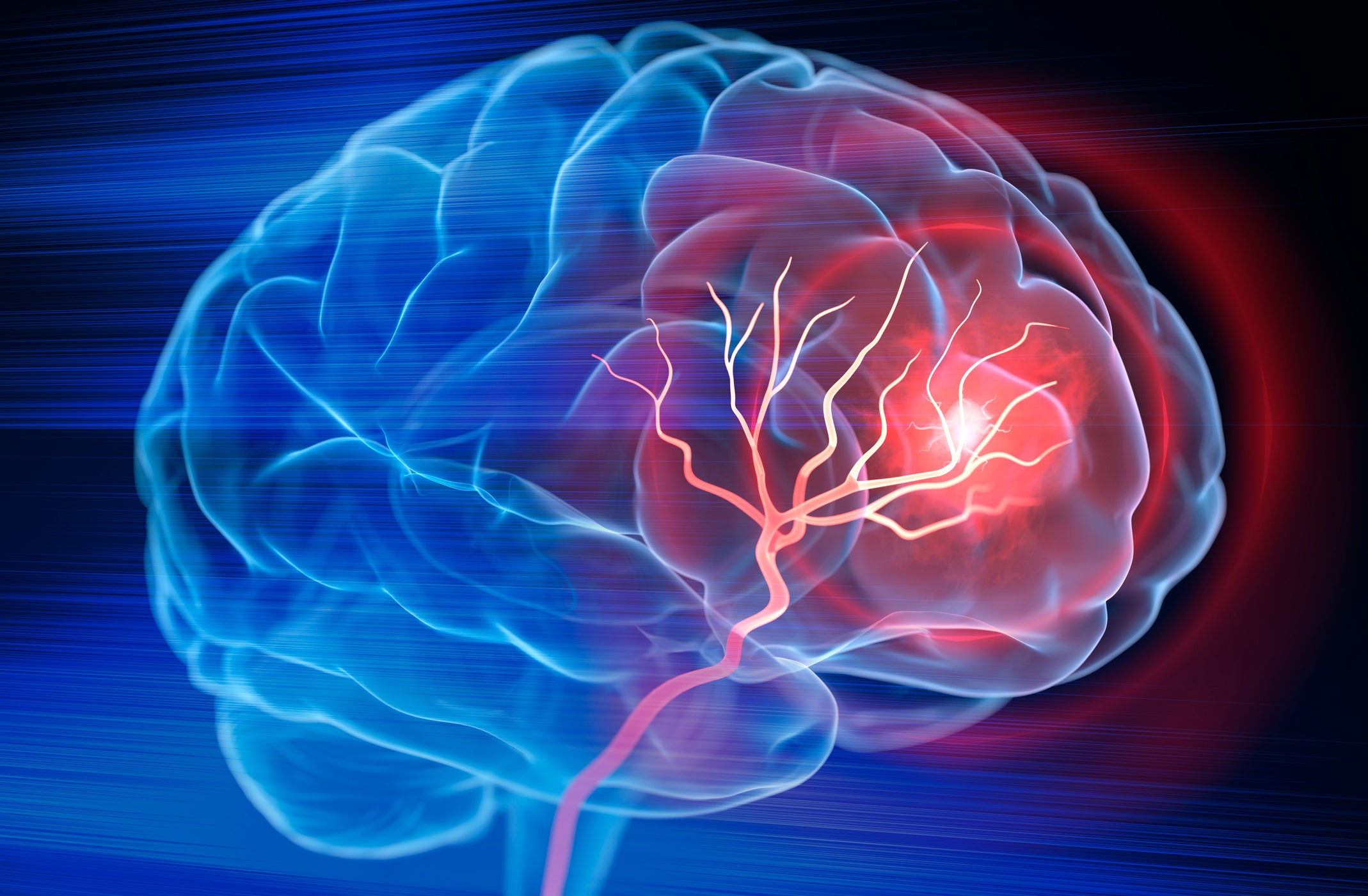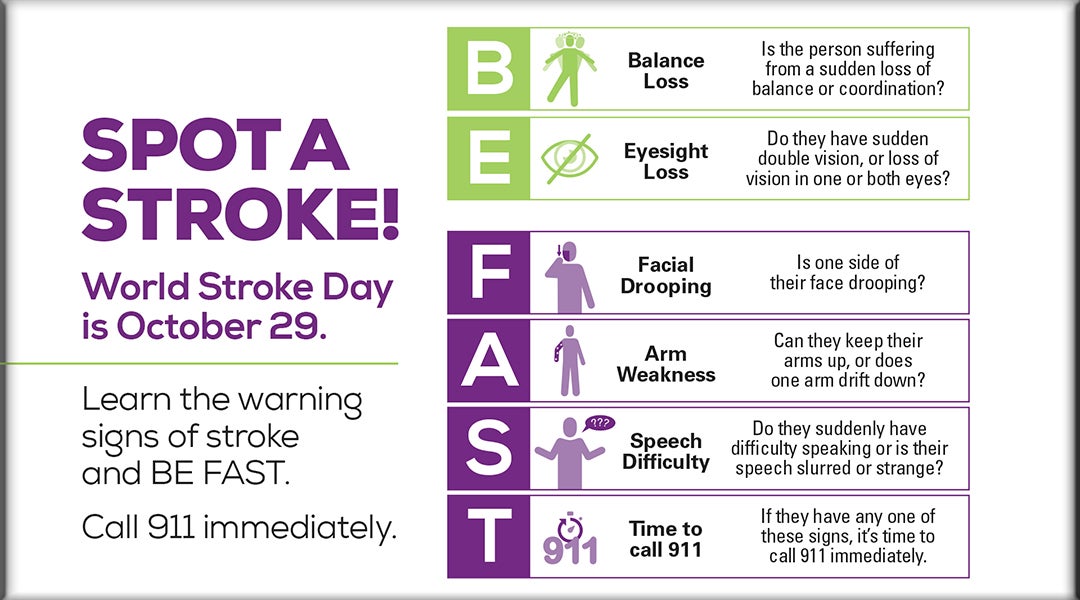Don't Let Stroke Take You by Surprise
October 19, 2020
Stroke is the fifth leading cause of death in the United States and the leading cause of long-term disability.

What is a Stroke?
A stroke occurs when something blocks blood supply to part of the brain, which causes brain tissue to die, leading to brain damage, disability and death. Sometimes known as a brain attack, a stroke happens in two ways:
- Ischemic stroke – when the blood supply to the brain is blocked
- Hemorrhagic stroke – when a blood vessel in the brain bursts.
Who is at risk for a stroke?
Anyone can have a stroke, at any time. About 800,000 people a year in the U.S. have a stroke. Certain factors that lead to stroke are out of your control, such as age, sex and ethnicity. But there are many unhealthy habits, within your control, like smoking, excess alcohol consumption and lack of exercise, that can help you avoid a stroke.
What are some signs of a stroke?
When it comes to stroke, every second counts. B.E.F.A.S.T. can help stroke patients get the treatments they need to survive and reduce damage to the brain.
B = Balance loss
E = Eyesight loss
F = Face drooping
A = Arm weakness
S = Speech difficulty
T = Time to call 9-1-1
Other signs of a stroke include:
- Sudden dizziness, trouble walking or loss of balance or coordination
- Sudden trouble seeing in one or both eyes
- Sudden severe headache with no known causes
- Sudden numbness of the face, arm or leg
- Sudden confusion or trouble understanding others
A stroke is a medical emergency, and treatment and outcomes depend on how fast you can get to the hospital. First responders, like paramedics, can immediately begin treatment and can alert the hospital that a stroke patient is on the way.
Doctors can perform several tests to diagnose stroke such as brain imaging, including a magnetic resonance imaging (MRI) or computed tomography (CT)scan, tests of the brain’s electrical activity, and blood flow tests.
Can stroke be prevented?
Lifestyle changes and medications can be critical to reducing stroke risks. High blood pressure is the most important risk factor to treat.
Some of the steps you can take to reduce your risk of stroke include:
- Eat a healthy diet.
- Maintain a healthy weight
- Be physically active.
- Don’t smoke and avoid secondhand smoke.
- Limit alcohol use
- Prevent or manage other health conditions, especially high blood pressure, high cholesterol, diabetes and obesity.
For more information on stroke visit the Centers for Disease Control and Prevention https://www.cdc.gov/stroke/index.htm and the American Stroke Association https://www.stroke.org/en.
